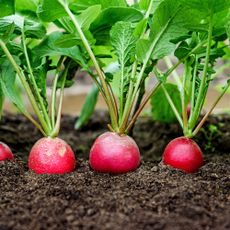Neptune Tomato Info: How To Grow A Neptune Tomato Plant

If you live in a temperate part of the world, having tomatoes in your garden may feel like a given. They are one of the quintessential vegetables of the vegetable garden. However, if you live in a hot climate or, even worse, a hot and wet climate, tomatoes are not so easy. Luckily, science is hard at work spreading the tomato love around, and every year universities are putting out new, hardier varieties that will thrive in more climates… and still taste good. The Neptune is one such variety. Keep reading to learn more about Neptune tomato plant care and how to grow a Neptune tomato.
Neptune Tomato Info
What is a Neptune tomato? The tomato “Neptune” cultivar is relatively new on the tomato scene. Developed by Dr. J. W. Scott at the University of Florida’s Gulf Coast Research and Education Center and released to the public in 1999, it is bred specifically to stand up to hot and wet summers in places like the Deep South and Hawaii, where tomatoes are famously hard to grow. This tomato plant performs well in hot weather, which is a must. It stands out for its resistance to bacterial wilt, which is a serious problem for tomato growers in the southeastern U.S.
How to Grow a Neptune Tomato Plant
Neptune tomato plants develop fruit early to mid-season, usually taking 67 days to reach maturity. The fruits themselves are bright red and juicy, weighing about 4 oz. (113 g.) and growing in clusters of two to four. The vines are determinate and bushy, usually reaching 2 to 4 feet (61 cm. to 1 m.) in height and growing its fruits on short, stubby stems. They can be grown in very large containers if necessary. Like most tomato varieties, they need full sun, warm weather, and rich soil in order to produce to their full potential with similar care requirements.
Gardening tips, videos, info and more delivered right to your inbox!
Sign up for the Gardening Know How newsletter today and receive a free copy of our e-book "How to Grow Delicious Tomatoes".

The only child of a horticulturist and an English teacher, Liz Baessler was destined to become a gardening editor. She has been with Gardening Know how since 2015, and a Senior Editor since 2020. She holds a BA in English from Brandeis University and an MA in English from the University of Geneva, Switzerland. After years of gardening in containers and community garden plots, she finally has a backyard of her own, which she is systematically filling with vegetables and flowers.
-
 Never Use Homemade Compost Until It Passes This Simple Radish Test
Never Use Homemade Compost Until It Passes This Simple Radish TestThe radish test is a foolproof trick for knowing whether your homemade compost is ready for planting – or if it could harm the health of your plants.
By Mary Ellen Ellis
-
 Best Trees For Containers: Create A Potted Grove On Your Porch With These 8 Compact Varieties
Best Trees For Containers: Create A Potted Grove On Your Porch With These 8 Compact VarietiesWe may not always think of trees as being obvious candidates for pots, but there are a few that not only thrive but flourish. Here are some of the best trees for containers
By Teo Spengler